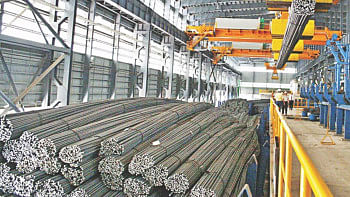Archaic HR policies that need revamping

The concept of modern HR first started to take form with the industrial revolution, when factories introduced programs to improve worker productivity. Even a few decades ago, HR only provided administrative support and ensuring compliance. Since then HR has evolved to become more strategic, goal oriented and long term focused, with companies formulating HR policies to ensure that they not just hire the best people, but also bring out the best in them. There have been many debates about what are the best policies, but for any dynamic organisation, HR policies shouldn’t be set in stone. With time, it was realised that some HR policies weren’t as effective as they were thought to be. With a new decade upon us, let’s look at some of these policies that needed revamping.
Old-fashioned maternity leaves
Becoming a parent is a special and important experience, but we see a lot of companies still having parental leaves that are only catered to mothers. Some also tend to be short term and curtailed of benefits (such as reduced pay), which can be quite detrimental at such a sensitive time. Organisations abroad have addressed this issue and are shifting towards both maternity and paternity leaves (for both biological and adoptive children). In this way the parents can choose the primary caregiver, and organisations don’t opt into societal expectations placed on mothers raising the child alone.
In Bangladesh, Unilever was the first to pioneer their paternity leave program with full pay. According to Nurul Monowar Ratul, Category Head at Unilever Bangladesh Limited, “To enable fathers to play a more active role in early parenthood, Unilever Bangladesh has extended its paternity policy to 3 weeks of paid leave and hosts an in-house day care facility for both working fathers and mothers.”
At British American Tobacco Bangladesh, they also revamped their leave programs for both biological and adoptive parents, changing how local organisations look at leave policies.
Special arrangements for women
Often times, for women working at the field level in various territories and regions, companies made ‘special arrangements’, such as extra security measures for female officers. This reinforces the stereotype that women aren’t as suited for field-level jobs and endorses the structural issues in place as a given. If security is an issue it should be an issue for all genders, and organisations should work to create a better infrastructure to offset the need for special arrangements in the first place. Rather than enforcing stereotypes, the focus should be on breaking them. To change perceptions about conventional roles for female employees, Unilever Bangladesh appointed their first ever female Regional Manager in the country, and introduced night-shifts for female Production Shift Officers at their Kalurghat Factory.
Rigid feedback mechanisms
Most companies have structural systems of feedback in place, such as annual or semi-annual performance evaluations, where employees sit down with a supervisor to have their work evaluated. But to create an environment that fosters learning and growth, there should be scope of real-time conversational feedback, so employees learn immediately what they’re doing right or wrong and areas of improvement, instead of having to wait for the end of the quarter. This is more motivating as well, since they’re communicated real-time impacts of their contribution.
Flexible benefits
Most organisations tend to offer a fixed basket of benefits for employees, usually according to their job level. However, a better alternative is to offer employees customisable benefits that are tailor-made to their needs. This is better suited for ensuring employee satisfaction and also in attracting recruits. For example, some organisations in the US offer student-debt repayment, and Selise, a tech company with local offices, offers employees the opportunity to study abroad with various levels of tuition coverage.
Ashiq R Niloy, who used to be the head of Insurtech at Selise and is now pursuing his masters at KU Levern, Belgium, while still working as a Business Consultant for the company, says “I have worked with Selise for 3 years, focusing on web technology. But I am from a business background and knew that a relevant degree in the field would further my career. Selise is helping me achieve this career goal. On one side, I am not forced to take a career break during my studies in Europe. While on the other, Selise is financially helping me cover my tuition and living expenses based on what I need.”
A bell-curve performance appraisal
Once a very popular tool for assessment, a bell curve basically force ranks employees into three categories of top, average and low performing employees. However, this tool has faced some heat simply because of how rigid it is. Employees working very hard and meeting role expectations could be pushed into average and below average ranks, just because their metrics can’t be placed elsewhere, which is very demoralising. And in some cases, the bell-curve can be discriminatory as well, for example a pregnant woman being marked down due to her lighter work load. A lot of big names like Uber and Microsoft have moved away from it, and this really asks questions of its effectiveness. More and more companies are leaning towards performance appraisal frameworks that take in more factors into consideration and paint a more holistic picture, to ensure that employees are treated with equity.
Tashfia Mamun is a final year business student from IBA, University of Dhaka and an avid dog lover. Reach her at [email protected].

 For all latest news, follow The Daily Star's Google News channel.
For all latest news, follow The Daily Star's Google News channel. 



Comments